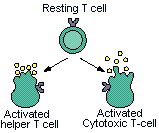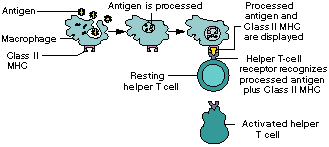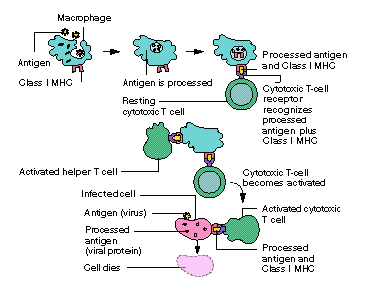|
What Happens to Antigens?
Antibodies The antibodies that B cells produce are basic templates with a special region that is highly specific to target a given antigen. Much like a car coming off a production line, the antibody's frame remains constant, but through chemical and cellular messages, the immune system selects a green sedan, a red convertible, or a white truck to combat this particular invader. However, in contrast to cars, the variety of antibodies is very large. Different antibodies are destined for different purposes. Some coat the foreign invaders to make them attractive to the circulating scavenger cells, phagocytes, that will engulf an unwelcome microbe. When some antibodies combine with antigens, they activate a cascade of nine proteins, known as complement, that have been circulating in inactive form in the blood. Complement forms a partnership with antibodies, once they have reacted with antigen, to help destroy foreign invaders and remove them from the body. Still other types of antibodies block viruses from entering cells.
T Cells Helper T cells, for example, also known as CD4 positive T cells (CD4+ T cells), alert B cells to start making antibodies. They also can activate other T cells and immune system scavenger cells called macrophages and influence which type of antibody is produced. Certain T cells, called CD8 positive T cells (CD8+ T cells), can become killer cells that attack and destroy infected cells. The killer T cells are also called cytotoxic T cells or CTLs (cytotoxic lymphocytes). T lymphocytes become CD4+, or helper T cells, or they can become CD8+ cells, which in turn can become killer T cells, also called cytotoxic T cells.
Immune System Process
Activation of Cytotoxic T Cells
Activation of B Cells to Make Antibody
|
|||||||||||||||||||




